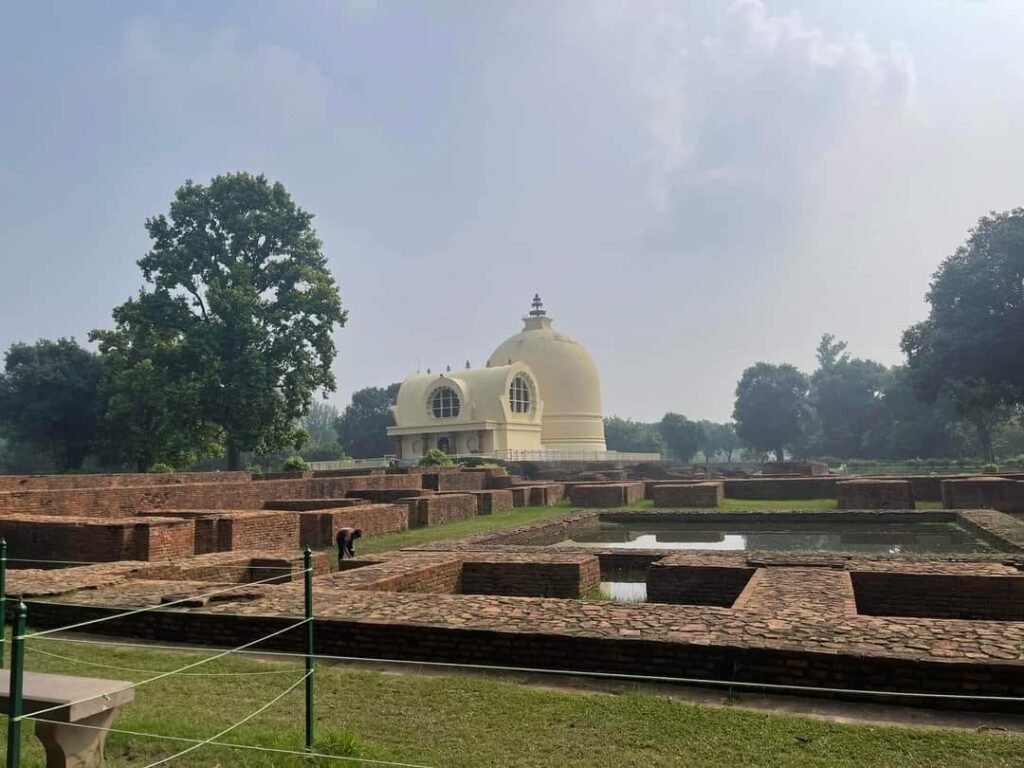the sacred site of Kushinagar, where the Buddha attained enlightenment and entered eternal peace. Explore its rich history, important dates, key places, and enduring significance. Immerse yourself in the tranquility and spiritual significance of this Indian pilgrimage destination.
Table of Contents
- History of Kushinagar
- The Buddha’s Parinirvana
- Early Buddhist Sites
- Kushinagar’s Rise
- Important Dates and Events
- The Buddha’s Birth
- The Great Departure
- The Enlightenment
- The First Sermon
- The Parinirvana
- Key Places in Kushinagar
- Mahaparinirvana Stupa
- Ramabhar Stupa
- Tharu Village
- Japanese Temple
- Significance of Kushinagar
- Pilgrimage Site
- Spiritual Center
- Cultural Heritage
- World Heritage Site
- Kushinagar’s Enduring Influence
- Spread of Buddhism
- Global Peace and Harmony
- Interfaith Dialogue

- Location: Kushinagar, Uttar Pradesh, India
- Best Time: October to March
- How to Reach: 1 km from Kushinagar Railway Station
- Sightseeing: Parinirvana Stupa, Nirvana Temple
History of Kushinagar Mahaparinirvana Stupa in Kushinagar
- The Buddha’s Parinirvana: Kushinagar is the sacred site where the Buddha attained enlightenment and entered eternal peace, known as Parinirvana. This event marked the end of his earthly life and the beginning of his spiritual journey.
- Early Buddhist Sites: The site has a rich history dating back to the 3rd century BCE when Emperor Ashoka built a simple stupa to commemorate the Buddha’s Parinirvana Stupa. Over time, Kushinagar became a significant Buddhist pilgrimage center.
- Kushinagar’s Rise: During the Gupta Empire, Kushinagar experienced a period of great prosperity and witnessed the construction of magnificent Buddhist monuments.
Important Dates and Events
- The Buddha’s Birth: 563 BCE (Lumbini, Nepal)
- The Great Departure: 534 BCE (Kapilavastu, India)
- The Enlightenment: 528 BCE (Bodh Gaya, India)
- The First Sermon: 528 BCE (Sarnath, India)
- The Parinirvana: 486 BCE (Kushinagar, India)
Key Places in Kushinagar Ramabhar Stupa in Kushinagar
- Mahaparinirvana Stupa: The central focal point, marking the exact spot where the Buddha passed away.
- Ramabhar Stupa: A smaller stupa believed to contain the Buddha’s ashes.
- Tharu Village: A traditional Tharu village near Kushinagar, offering a glimpse into local culture.
- Japanese Temple: A beautiful temple built by the Japanese government.
Significance of Kushinagar
- Pilgrimage Site: Kushinagar is a major pilgrimage destination for Buddhists worldwide.
- Spiritual Center: It offers a serene environment for meditation, reflection, and spiritual growth.
- Cultural Heritage: The site is a symbol of India’s rich cultural and religious heritage.
- World Heritage Site: Its historical and spiritual importance led to its designation as a UNESCO World Heritage Site.
Kushinagar’s Enduring Influence
- Spread of Buddhism: Kushinagar played a crucial role in the spread of Buddhism across Asia and beyond.
- Global Peace and Harmony: The teachings of the Buddha promote peace, compassion, and wisdom, fostering harmony worldwide.
- Interfaith Dialogue: Kushinagar serves as a platform for interfaith dialogue and understanding.





